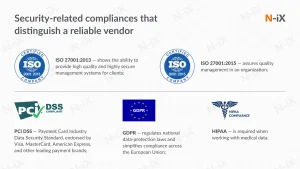Neurodiversity Inclusion Strategies for Modern Workplaces

Think about the last truly brilliant idea your team had. The one that came out of left field and solved a problem you’d been circling for months. Chances are, it didn’t come from everyone thinking in the same, predictable way. It came from a different perspective. A different kind of mind.
That’s the power of neurodiversity. It’s the simple, yet profound idea that neurological differences—like Autism, ADHD, Dyslexia, and others—are natural variations of the human brain, not deficits. And for modern businesses, tapping into this vast, often overlooked talent pool isn’t just a DEI checkbox. It’s a strategic imperative.
Let’s be honest, the traditional “one-size-fits-all” workplace was designed for a mythical “average” worker. It’s a system that often inadvertently filters out brilliant, neurodivergent individuals. But the game is changing. Here’s how you can build a workplace where every kind of mind can not just survive, but truly thrive.
Rethinking the Hiring Process
It all starts at the very beginning. The standard job interview can be a minefield for neurodivergent candidates. It’s a high-pressure social performance that often rewards quick, smooth answers over deep, authentic skill. So, how do we fix this?
Ditch the Abstract Questions
Questions like “Where do you see yourself in five years?” or “What’s your greatest weakness?” are, frankly, theater. They test someone’s ability to interview well, not their ability to do the job.
Instead, provide questions in advance. This simple act levels the playing field, reducing anxiety and allowing candidates to present their best thinking. Focus on practical, skills-based assessments. Give them a real-world problem to solve or a sample task that mirrors the actual work. You’re not hiring a conversationalist; you’re hiring a doer.
Offer Multiple Avenues for Application
Some people articulate their thoughts best in writing. Others excel in a structured conversation. Allow for different ways to demonstrate capability. Could a candidate submit a written project plan instead of a traditional cover letter? Could the first interview be a text-based chat? Flexibility is the name of the game.
Crafting an Inclusive Physical (and Digital) Environment
Once you’ve hired amazing talent, the next step is to create an environment where they can do their best work. Sensory overload is a real and often debilitating issue for many neurodivergent folks. The constant hum of an open office, the flicker of fluorescent lights, the barrage of spontaneous conversations—it’s like trying to concentrate in the middle of a rock concert.
Here are a few practical adjustments:
- Provide Sensory Sanctuaries: Invest in quiet rooms or designated low-sensory zones. These are not “time-out” spaces; they are essential productivity tools for anyone who needs a break from the cognitive drain of a busy office.
- Lighting and Sound Control: Offer noise-canceling headphones as standard equipment. Where possible, use natural light and adjustable task lighting instead of harsh overhead lights.
- Clarity in Communication: This is a big one. Be explicit in your instructions and expectations. Avoid corporate buzzwords and vague directives. Ambiguity is the enemy of productivity for many neurodivergent employees. Provide written summaries after meetings to ensure everyone is on the same page.
Flexibility as a Foundation, Not a Perk
The 9-to-5, butt-in-seat model is, well, outdated. Neurodivergent individuals often have unique energy patterns and focus cycles. An employee with ADHD might be incredibly productive from 10 PM to 2 AM. An Autistic employee might need a two-hour break in the middle of the day to avoid burnout.
Embrace flexible work hours and remote or hybrid options. Judge performance by output and results, not by physical presence or the number of hours logged. This isn’t about special treatment; it’s about optimizing for performance. You’re giving people the autonomy to work in the way their brains function best. The payoff? Higher quality work, increased loyalty, and dramatically reduced burnout.
Management and Mentorship that Actually Works
Managers are the linchpin of any inclusion strategy. They need the tools and training to support their teams effectively. This starts with moving away from a deficit-based mindset (“What’s wrong with this person?”) to a strength-based one (“What amazing superpowers does this person have, and how can I help them unleash them?”).
Implement a system of ongoing feedback loops. Don’t wait for the annual review. Create a culture where employees can comfortably say, “Hey, this process is creating a barrier for me. Can we find a better way?” This requires psychological safety—the belief that you won’t be punished or humiliated for speaking up.
And here’s a simple but powerful tool: offer regular one-on-ones that are agenda-driven and structured. This provides predictability and a dedicated space to discuss needs and challenges without the pressure of a surprise “chat.”
Measuring What Matters: Beyond the Buzzwords
You can’t manage what you don’t measure. To build a genuinely neuroinclusive culture, you need to track your progress. This goes far beyond just counting hires.
| Metric to Track | Why It Matters |
| Retention rates of neurodivergent employees | Hiring is just the first step; are they staying and growing? |
| Promotion rates & career progression | Are neurodivergent employees advancing into leadership roles? |
| Employee engagement scores (with neurodiversity disaggregation) | Do they feel a true sense of belonging and psychological safety? |
| Utilization of support resources & accommodations | Are the systems you’ve put in place actually being used? |
Collect this data anonymously and act on it. Listen to the stories behind the numbers.
The Bottom Line Isn’t Just the Bottom Line
Sure, the business case is solid. Companies that champion neurodiversity report gains in innovation, problem-solving, and productivity. But the real shift is deeper. It’s about moving from mere accommodation to true integration. It’s about recognizing that the “right way” to think, communicate, and work is not a single, narrow path.
Building a neuroinclusive workplace isn’t a final destination you arrive at. It’s a continuous journey of listening, learning, and adapting. It requires humility from leadership and a willingness to question long-held assumptions about “how work is done.”
When you stop asking people to mask who they are just to fit in, you unlock something extraordinary. You get authenticity. You get passion. You get the kind of raw, unfiltered talent that can’t be replicated. And honestly, in today’s complex world, that’s not just a nice-to-have. It’s the only way forward.







